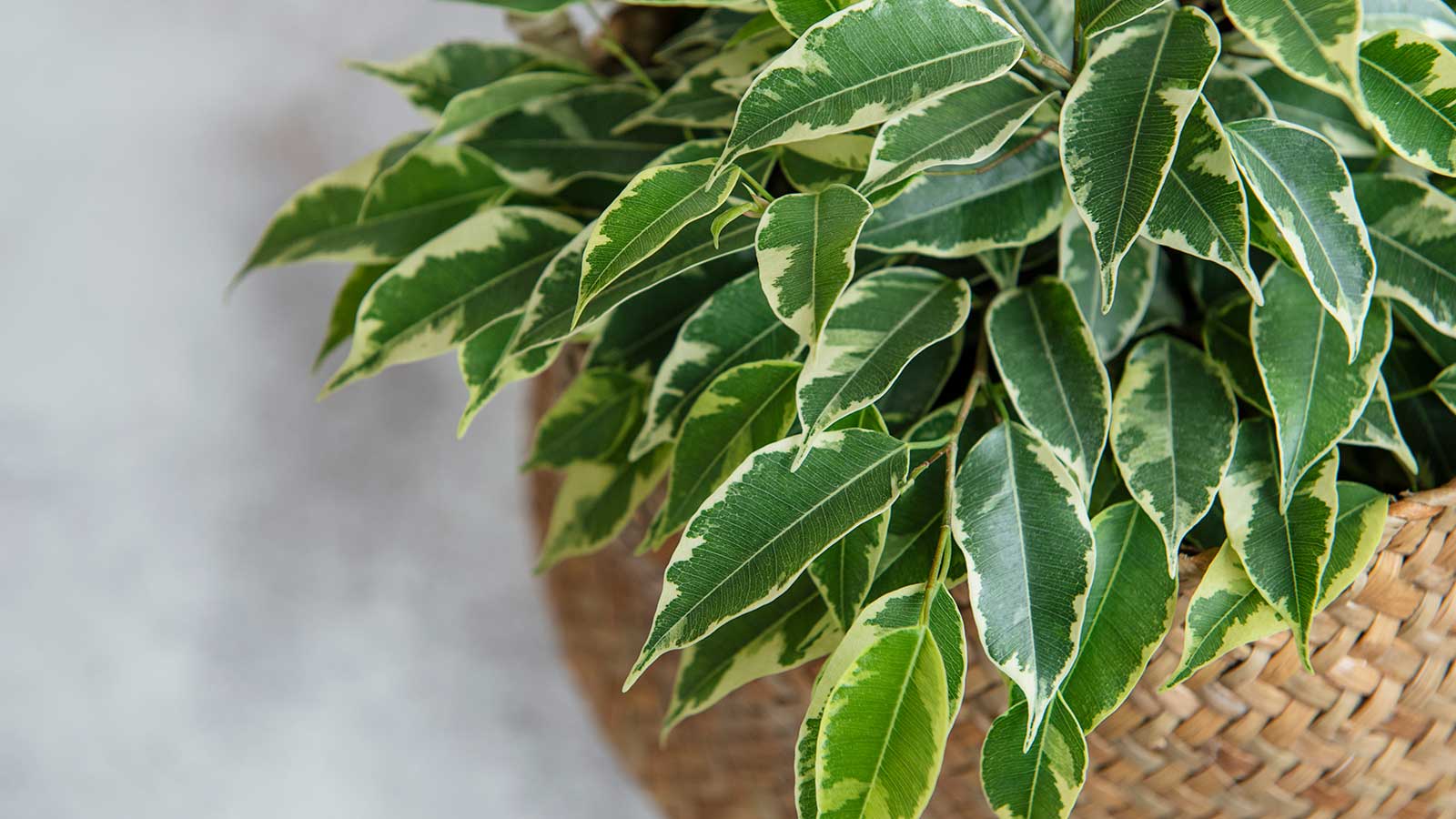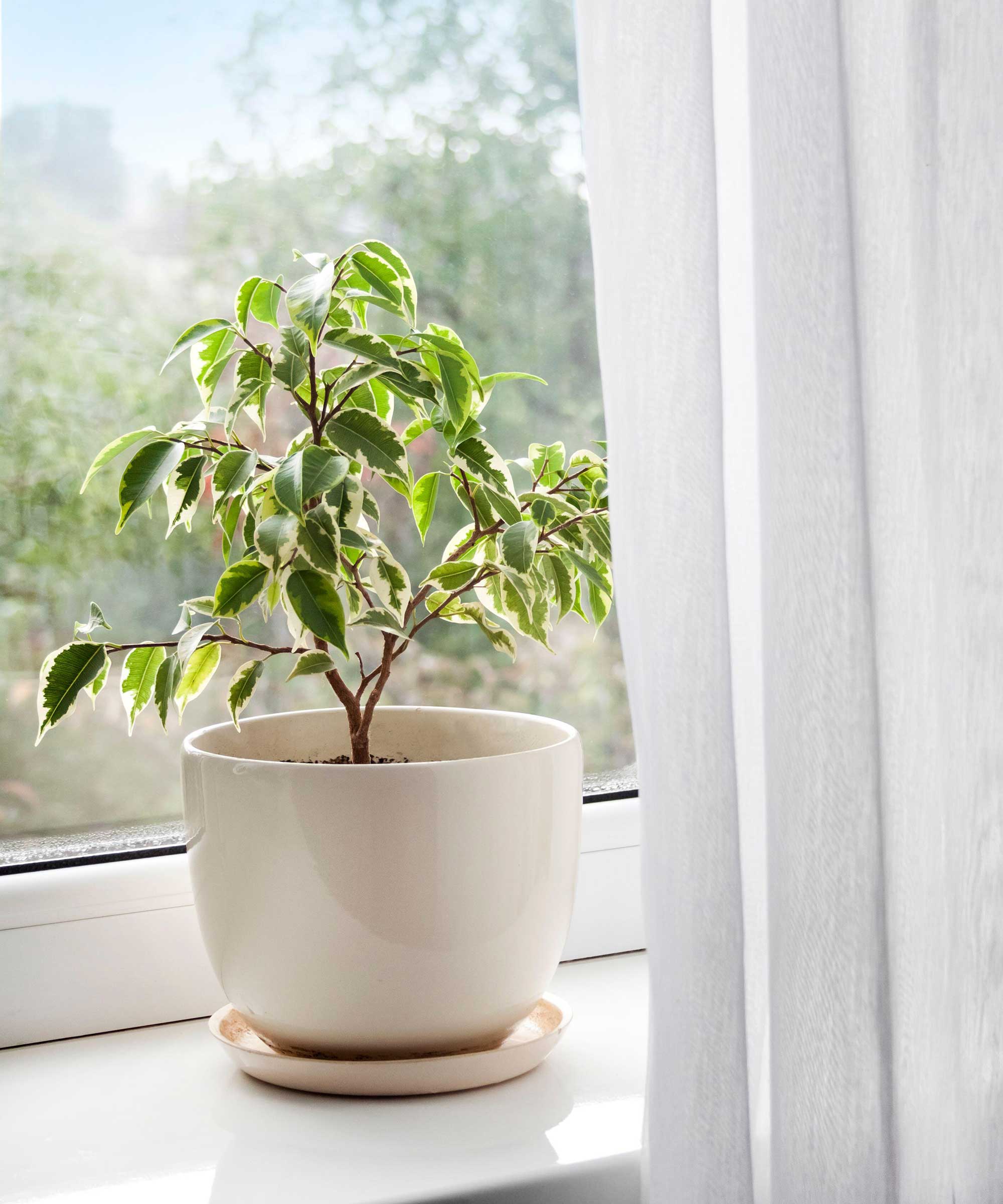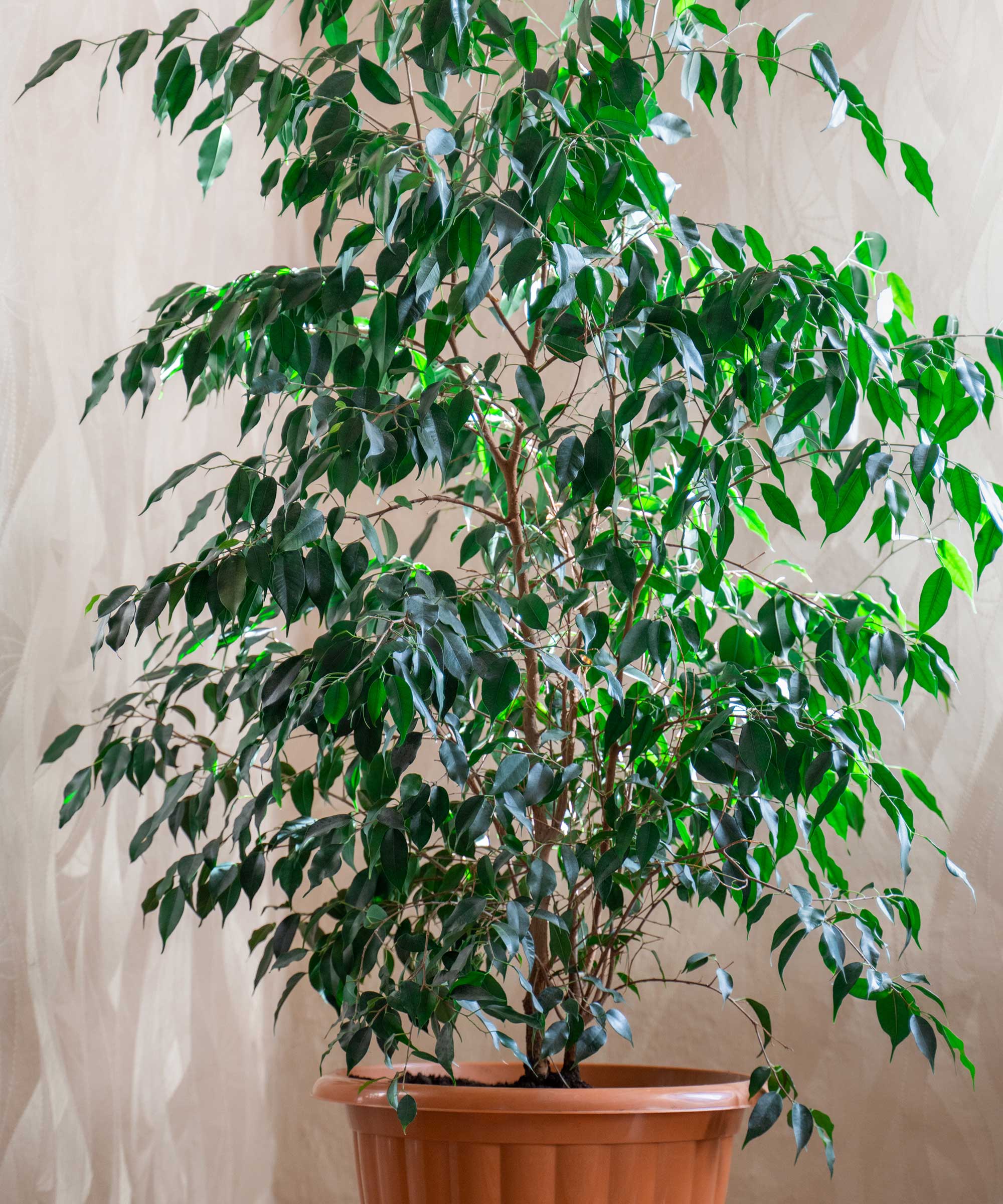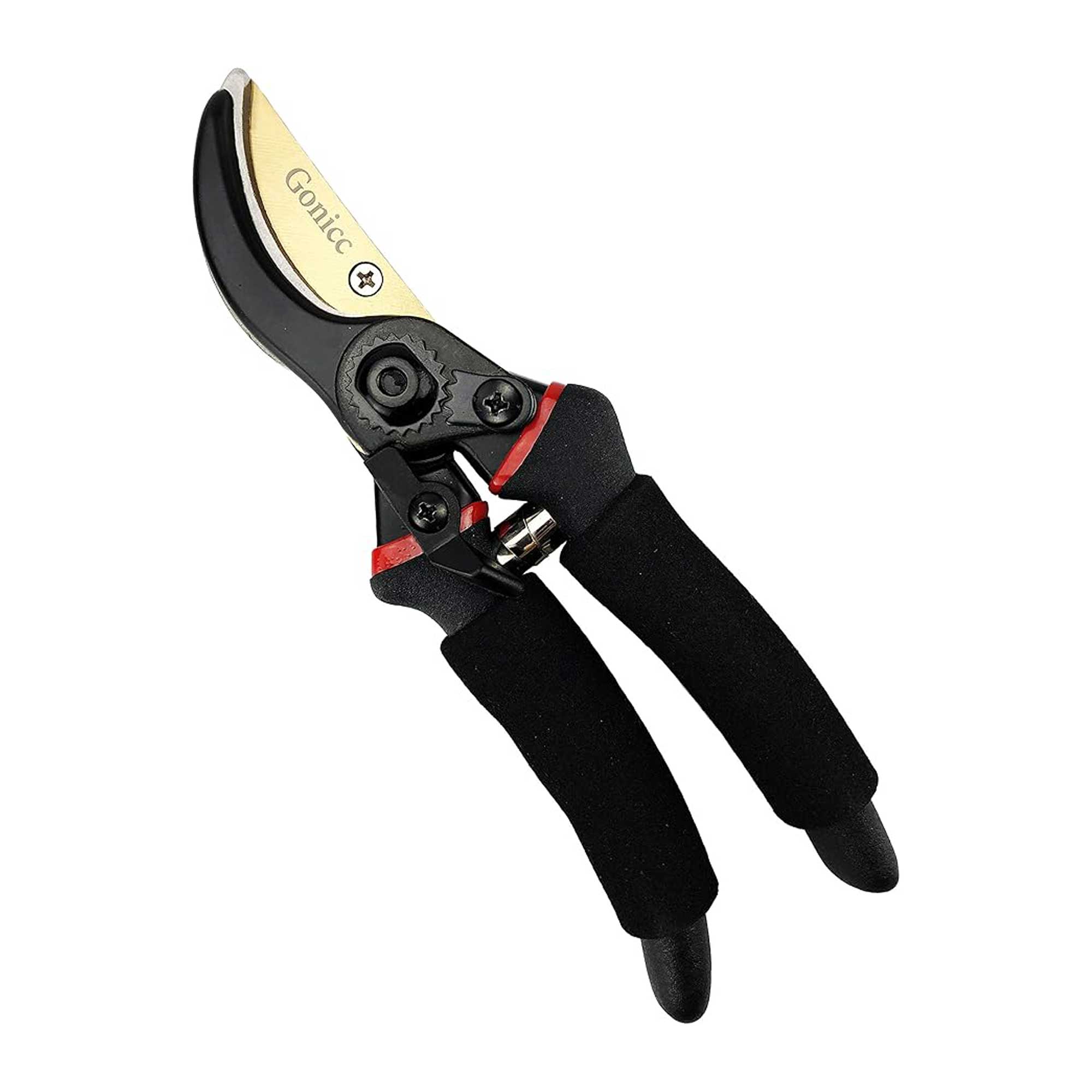Weeping fig indoor plant care guide – experts share top tips for these small trees
Encourage strong growth and luscious leaves with our advice on watering, light, pest problems, and more


Q: I have recently moved into a new apartment and am in the process of filling it with houseplants. I've picked a weeping fig for the living room, but I've never grown one before and don't know how to care for it. Do you have any advice?
A: Outdoors, in warm climes, weeping figs (Ficus benjamina) can grow into huge specimen trees. As houseplants, they reach much smaller heights, but they still make a statement with their glossy leaves. The variegated varieties are particularly striking.
These indoor trees are popular not only for their good looks but also for their ease of maintenance. Get a few essentials right, such as providing the proper amount of water and light, and you'll be rewarded with a luscious and leafy feature for years to come.

Weeping figs are usually less than 6ft when grown indoors
Follow this weeping fig indoor plant care guide for healthy houseplants
Below, the houseplant experts share their advice on caring for these low-maintenance indoor trees.
1. Avoid overwatering

Too much water can cause problems for these plants
Kiersten Rankel, a houseplant expert from Greg, notes how weeping figs prefer their soil to dry out slightly between waterings. Overwatering can lead to root rot, she warns. So, like when caring for fiddle leaf figs, err on the side of caution.
'Stick your finger about an inch into the soil – if it feels dry, it's time for a drink,' Kiersten recommends. You could alternatively invest in a soil moisture meter, available from The Sill. In winter, she recommends watering them less often as their growth slows down.
Nastya Vasylchyshyna, resident botany expert at Plantum, also advises keeping humidity levels high around your weeping fig, by using a humidifier or misting the plant with soft water frequently.
Design expertise in your inbox – from inspiring decorating ideas and beautiful celebrity homes to practical gardening advice and shopping round-ups.
Incorrect watering can also be a cause of weeping fig leaf drop, so take care to water it moderately.

Kiersten Rankel is a certified Louisiana Master Naturalist and regularly volunteers with local community gardens and nonprofits to help restore critical ecosystems along the Gulf Coast. She earned her master's degree from Tulane University in Ecology and Evolutionary Biology after her undergraduate degree in Environmental Biology, also from Tulane. In her spare time, she enjoys hiking and tending to her 150+ houseplants and vegetable garden.

Nastya is a professional botany expert for the Plantum app that helps identify plants and plant diseases and provides care recommendations. Her specialization is plant morphology, phytopathology, and plant physiology.
2. Find a spot with the right light

Bright, indirect light will help your houseplant flourish
The importance of light is often overlooked when caring for houseplants, but it can make a big difference in whether they thrive or flop.
While there are plenty of indoor plants suitable for low-light conditions, weeping figs prefer a brighter environment. You'll need to get the balance right, though: 'Too little light can cause leaf drop, while direct sunlight can scorch the leaves,' Kiersten says. 'A spot near a north or east-facing window often works well.'
Ficus benjamina can defoliate due to constant moving and changes in growing conditions, Nastya warns. With this in mind, try to get the location right for your plant straight away, then leave it there.
3. Prune when needed to keep them neat

Weeping figs can benefit from a quick tidy with clean pruners
Pruning can help keep your plant from getting unruly, Kiersten points out. 'Feel free to trim back leggy growth or remove any dead or yellowing leaves,' she says. 'The best time to prune is in early spring, just as new growth is beginning.'
Wear gardening gloves for the task, as similar to rubber plants, weeping figs' sap can irritate skin. And, always ensure your pruners are sharp and clean before you start, to protect your plant from damage or disease. Remember to cut just above a healthy leaf or growth node, too, to encourage new, strong growth.
Top tip: Nastya says to avoid pruning the plant right before or after repotting, as it can weaken it.
FAQs
How often should you repot an indoor weeping fig?
Repotting houseplants with fresh compost helps give them a boost in nutrients and more space to grow.
According to Kiersten, weeping figs should be repotted every two to three years, or simply when you notice roots growing out of the drainage holes. Use a pot that's one to two inches larger in diameter than the current one.
'Use a well-draining potting mix, and be gentle with the roots during the process,' she adds. Water the plant thoroughly afterward.
How do you propagate an indoor weeping fig?
As long as you avoid making common houseplant propagation mistakes, you can produce new weeping fig plants by taking stem cuttings.
Take cuttings that are four to five inches long, Kiersten says. 'Remove the lower leaves, and place them in water or a moist potting mix. Keep the cuttings warm and humid, and you should see roots developing in a few weeks.' She recommends carrying out the job in spring or early summer.
'If rooting the cuttings in water, add fresh water as it evaporates,' Nastya adds. 'Adding activated charcoal to the water will prevent it from turning green and stop the cuts rotting.' We like the look of this horticultural charcoal by Olivette from Amazon, which can also be used to make terrariums.
What are some common problems for indoor weeping figs?
Kiersten says, 'Leaf drop is often the biggest concern with Ficus benjamina. This can be caused by changes in temperature, light, or humidity. They’re creatures of habit and don't like sudden changes.' It's a good idea to protect your plant from central heating, as well as cold drafts.
'Other issues to watch out for include pests like spider mites or scale insects,' Kiersten continues. 'Regular inspection and occasional wiping of the leaves can help keep pests at bay.' Nastya recommends applying insecticidal soap if you spot harmful insects or their signs.
As well as weeping figs, there are other tall houseplants worth considering, too. Monsteras, for instance, create a striking look with their large leaves.

Holly started writing about gardening five years ago, and she is a regular contributor to Homes & Gardens. She has also written many gardening features for Woman & Home and Real Homes, too. She has previous experience as a professional gardener, where she helped to plant and maintain private gardens. Holly has also looked after allotment plots over the years and loves to grow her own flowers and veggies from seed. In her spare time, she enjoys visiting local gardens, botanical drawing, and tending to her ever-growing collection of houseplants.
